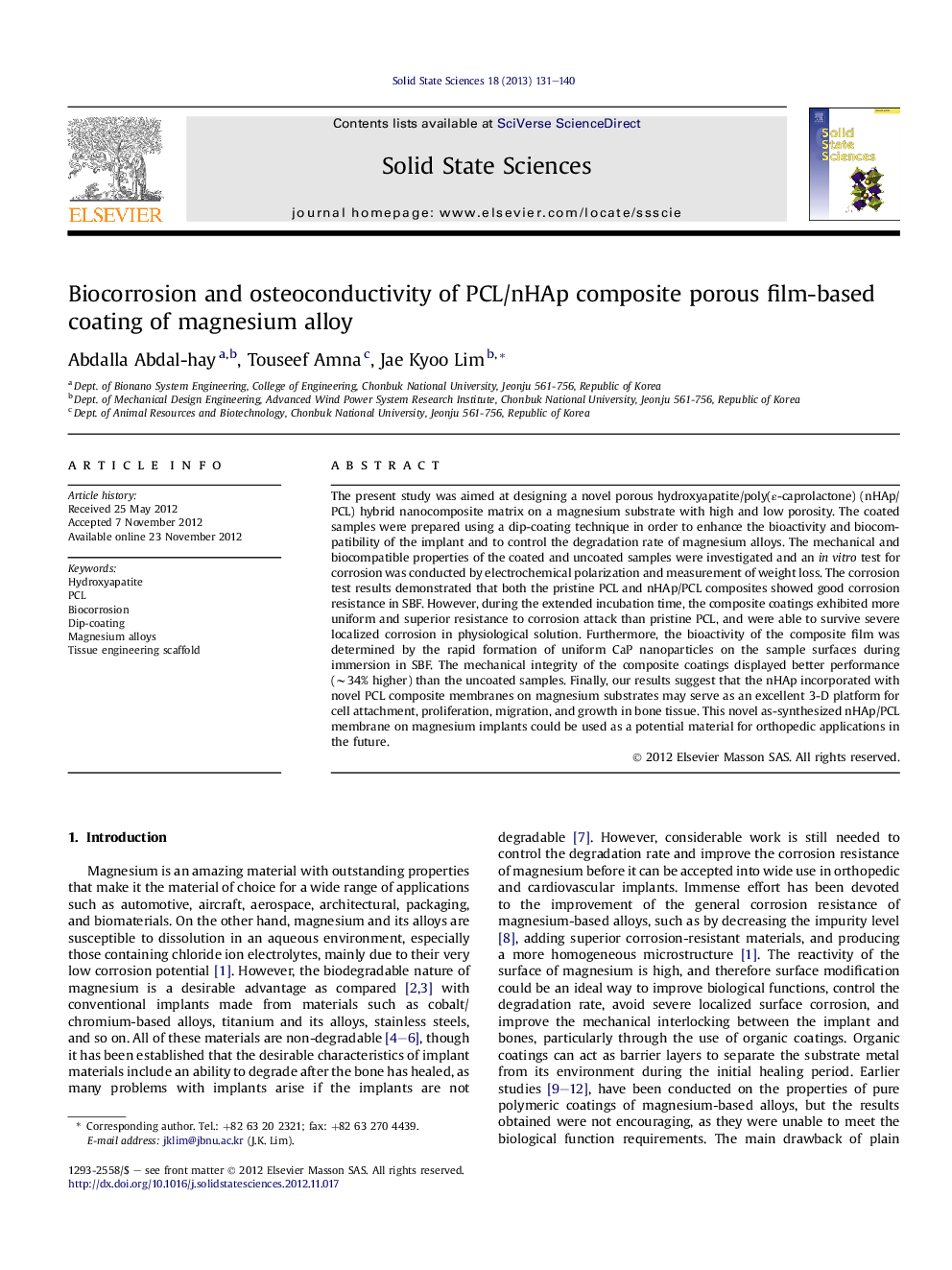| Article ID | Journal | Published Year | Pages | File Type |
|---|---|---|---|---|
| 1504721 | Solid State Sciences | 2013 | 10 Pages |
The present study was aimed at designing a novel porous hydroxyapatite/poly(ε-caprolactone) (nHAp/PCL) hybrid nanocomposite matrix on a magnesium substrate with high and low porosity. The coated samples were prepared using a dip-coating technique in order to enhance the bioactivity and biocompatibility of the implant and to control the degradation rate of magnesium alloys. The mechanical and biocompatible properties of the coated and uncoated samples were investigated and an in vitro test for corrosion was conducted by electrochemical polarization and measurement of weight loss. The corrosion test results demonstrated that both the pristine PCL and nHAp/PCL composites showed good corrosion resistance in SBF. However, during the extended incubation time, the composite coatings exhibited more uniform and superior resistance to corrosion attack than pristine PCL, and were able to survive severe localized corrosion in physiological solution. Furthermore, the bioactivity of the composite film was determined by the rapid formation of uniform CaP nanoparticles on the sample surfaces during immersion in SBF. The mechanical integrity of the composite coatings displayed better performance (∼34% higher) than the uncoated samples. Finally, our results suggest that the nHAp incorporated with novel PCL composite membranes on magnesium substrates may serve as an excellent 3-D platform for cell attachment, proliferation, migration, and growth in bone tissue. This novel as-synthesized nHAp/PCL membrane on magnesium implants could be used as a potential material for orthopedic applications in the future.
Graphical abstractFigure optionsDownload full-size imageDownload as PowerPoint slideHighlights► Synthesis of novel PCL/nHAp composite coatings on Mg alloy by dip-coating technique. ► Mechanical and biocompatible properties were investigated. ► Treated samples indicated significant damping for the degradation rate. ► Cytocompatibility test of the coated samples on MC3T3 cells revealed a good behavior.
